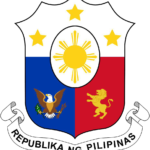GOVERNMENT STRUCTURE
Sixty-five component barangays constitute the City Of Cauayan, which is further clustered into five Regions namely: Poblacion Area, Tanap Region, East Tabacal, West Tabacal and the Forest Region.
The City Mayor is the Chief Executive of Cauayan, with the Vice Mayor as the Deputy Chief Executive. Local laws are enacted by the Sangguniang Panlungsod, made up of ten Regular Members elected and two Sectoral Representatives.All elected officials in the city and barangay levels serve a term of three years, with a maximum of three consecutive terms for each. They share the common aspiration of putting the City of Cauayan in the global map as a major agro-industrial and tourism hub in the pacific.
GEOGRAPHY
 The City of Cauayan is one of the two cities and 35 municipalities of the Province of Isabela. It is situated in Central Isabela and is centrally located in the entire Cagavan Valley region. It is bounded by eight municipalities, on the north by Reina Mercedes; on the northeast by Naguilian; on the east by Benito Soliven; on the Southeast by San Guillermo; on the south by Angadanan; on the southwest by Alicia; and on the northwest by Luna and Cabatuan. It is located at 121-47′ longitude and 16-46′ latitude.
The City of Cauayan is one of the two cities and 35 municipalities of the Province of Isabela. It is situated in Central Isabela and is centrally located in the entire Cagavan Valley region. It is bounded by eight municipalities, on the north by Reina Mercedes; on the northeast by Naguilian; on the east by Benito Soliven; on the Southeast by San Guillermo; on the south by Angadanan; on the southwest by Alicia; and on the northwest by Luna and Cabatuan. It is located at 121-47′ longitude and 16-46′ latitude.
Cauayan is directly accessible to all of its neighboring municipalities. From Naguilian and Reina Mercedes, 15.04 and 11. 24 kilometers respectively on the concrete-paved Maharlika Highway; from Luna, Cabatuan, and San Mateo, 7.19, 11.7, and 23.50 kilometers respectively. It is 34.5 kilometers south of Ilagan, the capital town of Isabela, about 117 kilometers away from Tuguegarao City, and approximately 375 kilometers to Manila or about 8 hours trip by land and less than an hour flight by plane.Cauayan comprises an aggregate area of 336.40451 square kilometers representing 3.15% of the total land area of the province which is 10,664.56 sq. kilometers. It ranks tenth highest in terms of land area among the 37 Local Government Units of the province of Isabela.
HISTORY & CULTURE

Cauayan is a city in Isabela situated in the center of this big and naturally rich province. The town got its name from the word “Cauayan” meaning bamboo in the dialect of Gaddang, the early settlers of this place. How it got its name is told vaguely by the natives in the tale about how the early Spaniards who reached the place found abundant growths of bamboo trees along creeks that circled the town site namely Bulod, Sipat, Bungkol and Marabulig creeks where few families lived. It was also a common sight to see crocodiles basking under the cluster of bamboo along the creeks in the early morning sun.
Cauayan used to be a big municipality in terms of land area, however, with the creation of the neighboring municipalities of Luna (Antatet) Cabatuan, Reina Mercedes (Callering), Aurora and San Mateo, its land area was reduced to about 336.40 square kilometers. Cauayan was an original town of the province of Cagayan. It was transferred to Nueva Vizcaya when it became a province in 1839. Upon the creation of Isabela as a province by a Royal Decree issued on May 1, 1856, it was reverted as a town of the province. Founded in 1740, Cauayan antedates the establishment of Isabela by 116 years. The town site was first located in a place called Calanusian along the Cagayan River, but after a series of disastrous floods, the town site was transferred to its present location.
REPUBLIC OF THE PHILIPPINES
All content is in the public domain unless otherwise stated.
ABOUT GOVPH
Learn more about the Philippine government, its structure, how government works and the people behind it.
